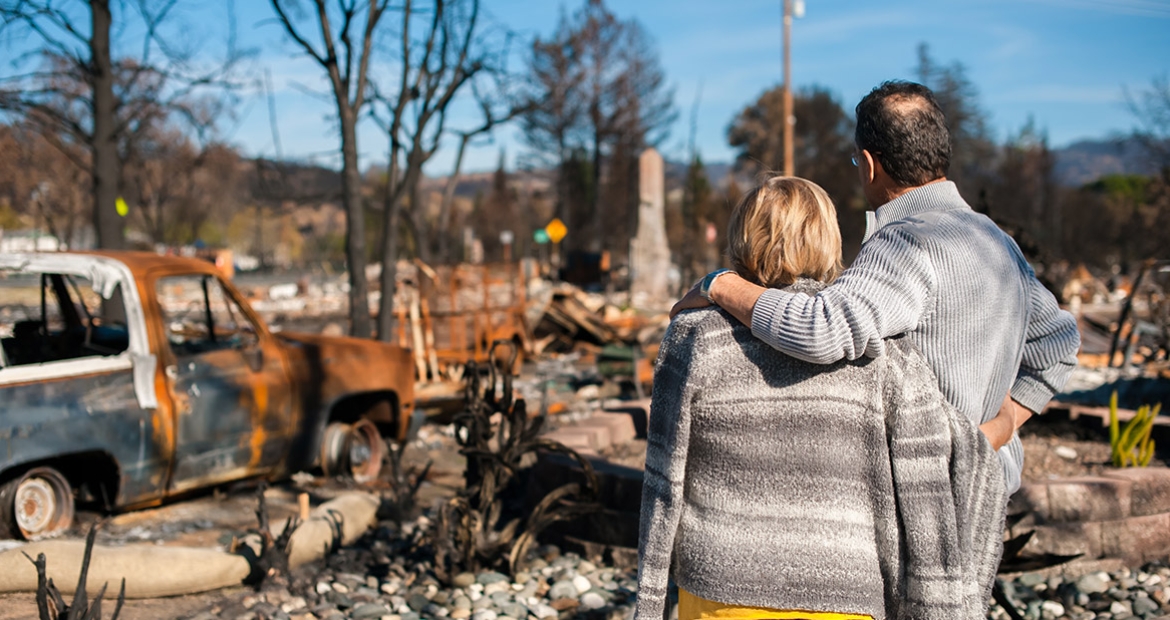Weather events, disasters and power outages in your state
By Aytek Yuksel, Content Marketing Leader - Power Systems

The United States is the fourth largest country in the world. It spreads across more than three million square miles. Residents of U.S. experience a wide range of weather events and disasters. These natural disasters also cause power outages. Some of these power outages affect millions of Americans.
Let's look at what types of disasters are more likely to occur across the states. Moreover, how these disasters can cause power outages.
Hurricanes and power outages
Hurricanes occur most frequently in the states along the Atlantic and Gulf coasts. These include Florida, Texas, Mississippi, Alabama, Georgia, North Carolina, South Carolina and New York.
The strong winds associated with hurricanes can bring down transmission or distribution lines and force power plant closures. These leave consumers without electricity for days, weeks, even months. For example, Tropical Storm Barry led to widespread flooding throughout Louisiana. It left 114,000 without power in July 2019. Most recently, Hurricane Zeta left over two million residents without power.
Earthquakes and power outages
Earthquakes occur most frequently among the states in the Pacific states. These include Alaska, California, Hawaii, Nevada, Oregon and Idaho. Meanwhile, they can happen anywhere, at any time. Earthquakes damage roadways and buildings. They can also cause a domino effect leading to fires, tsunamis, landslides, avalanches and power outages.
For example, earthquakes near Ridgecrest, CA left approximately 10,000 without power in recent years. The effects of the earthquake felt throughout California, west to Arizona and Nevada, and south into Baja Mexico.
Tornadoes and power outages
Tornadoes occur most frequently in the states across the Great Plains. These include Texas, Oklahoma, Kansas, Missouri, Arkansas, Missouri, Iowa, Mississippi, Alabama and Georgia.
Tornadoes can quickly escalate from threat to full-blown disaster. Tornadoes can threaten power plants and bring down transmission or distribution lines. These can cause power outages. In May, a tornado outbreak including two violent EF4 tornadoes devastated Ohio communities. It left thousands of residents without power, in some cases for days.
Winter storms and power outages
Winter storms occur most frequently across the northern states of the Great Plains and the Eastern seaboard.
Heavy snow and ice bring down tree branches onto power lines, leaving consumers without power. In April 2019, a blizzard known as Winter Storm Wesley dropped up to 16 inches of snow in Wyoming. It also dropped up to 25 inches snow in southern Minnesota, 30 inches in eastern South Dakota and 30 inches of in the Colorado Rockies. It left over 89,000 across the Midwest without power.
Wildfires and power outages
Wildfires occur most frequently across the Pacific states and Alaska. These include California, Nevada, Idaho, Oregon, Washington, Montana and even Texas.
Wildfires bring down transmission or distribution lines and force power plant closures. These leave consumers without electricity. In addition, planned power outages often accompany high wildfire risk. California experienced its deadliest and most destructive wildfire seasons in 2017 and 2018. Local utility company PG&E began preventative outages last year. The first planned power outage left 60,000 without power for four days.
Heat waves and power outages
Heat waves occur most frequently across the Great Plains and the Eastern seaboard. Heat waves increase the usage of some power-hungry amenities including air conditioners. This increased electricity usage causes a surge in the demand for electricity. This surge in demand could result in blackouts, power outages. Temperatures topped 100 degrees in parts of the South and Midwest when a heat wave hit in early August 2019. In Texas, electric utility ERCOT saw record demand for electricity during this time. This resulted in requests that residents lessen usage in the late afternoon and early evening to prevent power outages.
Preparation tips for power outages caused by weather events and disasters
- Check your insurance policy. Some traditional homeowner policies don't cover disasters like flooding and earthquakes.
- Find out if you're in a flood zone. If so, take immediate steps to get flood insurance. Some policies typically take 30 days to go into effect.
- Prepare a disaster kit for each member of your household. This includes children and pets. A basic emergency prep kit should include bottled water, non-perishable food, batteries and a flashlight.
- Keep a mini prep kit in your child's backpack.
- Keep additional supplies in your car in case if you need to evacuate with short notice.
- Severe weather and power outages often come together. In fact, severe weather is the leading-cause of power-outages in the U.S. Have a plan for backup power. This is to ensure vital medical equipment and appliances like sump pumps stay on during a power outage.
If you are interested in a more detailed power outage preparation list, we have the answer too. Start now to prepare for a power outage and download the ultimate checklist.
Author Profiles

Aytek Yuksel, Content Marketing Leader - Power Systems
Aytek is a marketing leader at Cummins, focusing on technology and thought leadership. Since joining in 2008, he has held various marketing roles and now shares insights on markets, technologies, and energy transition. Aytek lives in Minneapolis with his wife and two kids.